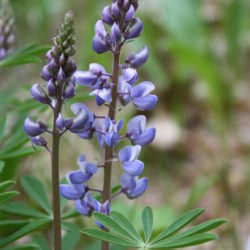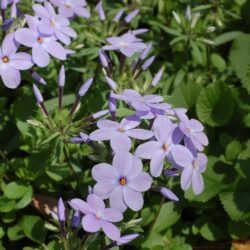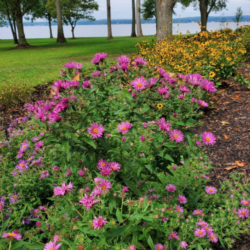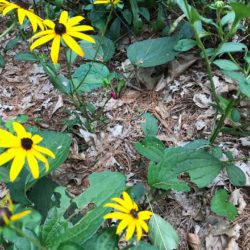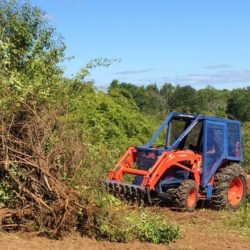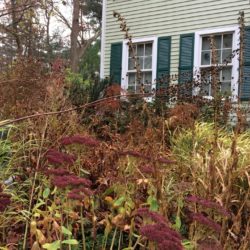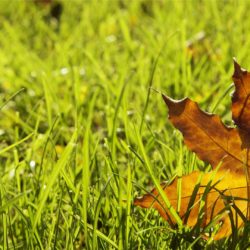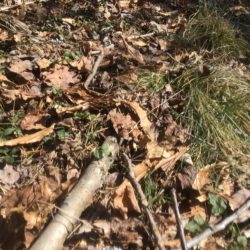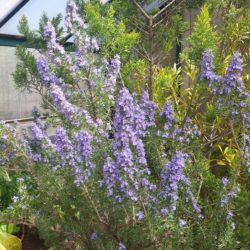Restoring a Pitch Pine-Oak Upland Forest at Norcross Wildlife Sanctuary Written by: Dan Wilder, Director of Wildlife Ecology, Norcross Wildlife Foundation Norcross Wildlife Foundation is located in south-central Massachusetts and…
Landscape Maintenance
Eco-Answers from the Pros: Do I Need Mulch with Groundcover?
In areas where I am trying to grow ground covers that self-spread, I haven’t been using mulch, thinking the mulch will hinder the self-spread of the desired ground cover. Thus weeds and other things I didn’t want to grow in that space do fill in. Is it recommended to use mulch even when the ultimate goal is to have the ground covered with plants? Mulch will save me a lot of weeding time.
As Things Always Change, the Nature of Nature Remains the Same
By Kelsey Skaroff
2020 was obviously a remarkable year for many in adjusting work, relationships, and life in general in response to a pandemic, social justice movements, the economy, climate change, and politics. After a brief moment of uncertainly my job as Head Gardner went on as normal in this most unusual year.
Leave the Leaves!
By Catherine Carney-Feldman
Though fall cleanup can be a hard habit to break, there are ample reasons to leave those leaves. Most native pollinator species overwinter right in your leaf litter and dead stems of your perennials. Leaf compost can greatly enhance the quality of your soil, help it retain moisture, and protect young plants from fluctuating winter temperatures. Utilize your leaves as a resource rather than a problem.
Reducing Invasive Plants and Recovering a Healthy Plant Community
By Ellen Snyder
In southeastern New Hampshire, where I work with landowners and communities on land stewardship, managing invasive plants is a constant struggle. As the Land Stewardship Coordinator for the Town of Durham, I’m guiding three restoration projects on town conservation land. It was hard not to be overwhelmed by the pervasiveness of invasive plants on all three properties. To avoid invasive paralysis, I keep my focus on the goal: restoration of a place to a mostly self-sustaining, healthy plant community. The reward is a restored landscape brimming with native plants and native beneficial insects.
Eco-Answers from the Pros: How Clean Should Fall Cleanup Be?
As I begin fall cleanup in my gardens, what are your recommendations? Should I clean beds off, cutting foliage and remaining seed heads off? Are there some plants best cut off and others that are good to leave until spring? Also, should I remove leaves entirely from the ground around plants? I didn’t get all the leaves removed from beds last year and had a lot of damage to plant roots from either voles or moles.
Eco-Answers from the Pros: What Should I Do with Leaves?
I am a groundskeeper who is trying to manage my grounds in a more ecological manner. I currently mulch (chop into tiny bits with the lawnmower) my leaves and leave the mulch on the lawn. I’m wondering would it be better for me to leave the leaves whole and let them blow around where they may. Or perhaps collecting them and dumping them into nearby non-lawn naturalized areas? Any insight you can provide is very helpful.
Maintenance Post SITES™ – Certification Journey at Dancing Tree, Part 2
by Margot Taylor
SITES certified six years ago, Dancing Tree is a model of a sustainable landscape, and the only residence with three-star certification. Now that the site is well established, the focus is on maintenance and resource management. This is the second part of an article about Dancing Tree; read Part 1 at Certification Journey at Dancing Tree.
Join Margot for an Eco-tour of Dancing Tree: Artfully Designed Pollinator Oasis on May 9, 4:30pm.
Leave the Leaves!
by Justin Wheeler Reprinted with permission from the Xerces Society’s blog. Besides providing the right plants, and protecting your garden from pesticides, one of the next most valuable things you…
Renewal and Ruins: Season Wrap-up 2017
by Tricia Diggins
This was the best growing season in eastern Massachusetts in a long time. We had rain in the spring! No worrying about stress on the trees in April when it is supposed to rain but doesn’t, like many recent springs. And the rain continued steadily, but not too much, through July.
Maintenance Matters
Contributors: John Magee, Daniel Peterson, and Bill Peregrine With the end of the 2017 season approaching, ELA asked members from across the country to recount the highlights of their season…
A Pruning Guide
by David Anderson David will lead a hands-on pruning demonstration and discussion on March 9th at the ELA Conference. As landscapers and horticulturalists pruning is a very important part of our work….

